Overview
AgriLMI is a dynamic program designed to assess and address the current challenges within the agricultural labour market in Canada. This initiative, spearheaded by the Canadian Agricultural Human Resource Council (CAHRC), aims to project future supply and demand for agricultural workers while proposing effective solutions to mitigate the sector's ongoing labour issues.
The primary objective of this initiative is to provide an update to the LMI study, extending the focus from 2017 to project supply and demand for agricultural workers from 2023 until 2030. The study provided forecast agricultural labour demand and supply for each province, spanning 11 different industry groups and 25 occupational groups.
The AgriLMI program serves as a vital resource for industry stakeholders, providing a nuanced understanding of the labour market dynamics, challenges, and potential solutions crucial for the sustained growth of Canada's agriculture sector.
Fast Facts
Canada’s agriculture sector faced a severe and chronic labour shortage in 2022;
• Over 28,200 jobs unfilled during peak season
• 3.7% decline in sales
• $3.5 billion loss in sales for the sector in 2022
• 7.4% peak vacancy rate, surpassing the 5.9% Canada-wide rate
• Two out of five employers struggling to hire necessary workers
Current Sector Overview:
• In 2022 the Canadian agriculture sector contributed
• $38.8 billion to the GDP
• Representing 1.9% of the national total
• $92.8 billion in agricultural and processed food exports in 2022
• The sector employed over 351,000 Canadian workers
• and 71,000 foreign workers (17% of the workforce), increased by more than 30% from 2017 to 2022
Labour shortages are projected to persist, with a peak domestic labour gap increasing and the aging of Canada’s population contributing to the forecasted domestic labour gap;
• 15% labour gap projected by 2030 during peak season
• Over 85,300 retirements expected by 2030
• Foreign workers projected to fill four out of five vacant positions
• However, 22,200 jobs are still expected to be unfilled during peak season in 2030.
National Data
Canada’s agriculture sector is incredibly diverse. From British Columbia’s fisheries to Saskatchewan’s grain fields to the dairies of Newfoundland and Labrador, the sector comprises very different industries, commodities, regions, and work environments.
However, the agriculture sector continues to grapple with chronic labour and skill shortages. In 2022, Canada’s agriculture sector experienced a peak vacancy rate of 7.4%, which resulted in over 28,200 unfilled jobs and a staggering $3.5 billion in lost sales. Moreover, the sector faces a projected 15% increase in the domestic labour gap by 2030.
This scarcity in labour is exacerbated by difficulties in attracting younger workers, managing retirements, and addressing retention challenges, all against the backdrop of tight labour markets and high inflation.
The LMI national report examines the current and future impact of these challenges on producers across Canada, and identifies solutions with the potential to strengthen the workforce and support the sector’s continued growth.
The full national report can be accessed in the document library.
Provincial Data
Canada’s agriculture sector plays a role in every province’s economy, but differences in the mix of industries, the population trends, and other factors create unique labour challenges for each one. For example:
• Alberta's agriculture sector is likely to face a significant retirement wave expected between 2023 and 2030, with 40% of the current domestic workforce projected to retire.
• Ontario’s agriculture labour gap is projected to increase by 15% by 2030. This is heightened by the declining supply of domestic workers.
• New Brunswick has limited exposure to career opportunities in the agriculture sector and declining populations in rural areas, making recruitment more challenging compared to other provinces.
While no two provinces have the same profile, all face significant agricultural labour challenges today and in the years ahead. Learn more by accessing fact sheets for Alberta, British Columbia, Manitoba, New Brunswick, Newfoundland and Labrador, Nova Scotia, Ontario, Prince Edward Island, Quebec, and Saskatchewan in the document library.
Visit the interactive data dashboard below for detailed province-by-province data sets. Last updated January 2024.
Industry Data
Employers in every agriculture industry area face unique challenges and advantages when it comes to attracting and retaining the skilled workers they need to thrive. For example:
• The dairy industry faces a persistent struggle to find domestic workers with the required skills.
• The greenhouse, nursery, and floriculture industry faces recruitment challenges due to the increasing demand for manual labour-intensive positions, exacerbated by high turnover rates, low pay and seasonality
• Aquaculture operations labour challenges are primarily recruiting and retaining skilled workers due to factors such as remote locations of operations, ongoing rural depopulation, limited transportation options and wage competition.
While the issues are different for every industry area, they all face significant labour challenges today and in the years ahead.
Visit the document library to learn more about the specific impact of these challenges on each of Canada's 11 commodity areas: apiculture, aquaculture, beef, dairy, fruit and vegetable, grain and oilseed, greenhouse, nursery & floriculture, poultry and egg, sheep and goat, swine, and agriculture support services.
Visit the interactive data dashboard below for detailed industry-by-industry data sets. Last updated January 2024.
Agriculture Sales and Services
The agriculture support services industries are defined as establishments primarily engaged in providing support activities for growing crops and support activities related to raising livestock, including companion animals.
The agriculture support services industry faced significant labour challenges in 2022, with a high peak vacancy rate of 10.5% and a turnover rate of 23%. Employers reported difficulties in recruiting due to a lack of essential and specialized skills.
While the industry is expected to have a stable supply of domestic workers over the forecast period, the growing demand for labour is projected to outpace the domestic supply, leading to a labour gap.
The industry had 660 foreign workers in 2022, but peak demand is anticipated to create a growing domestic labour gap over the next eight years.
The voluntary turnover rate in this industry is notably high, with limited career growth opportunities being a major factor.
For more labour market information on this industry, visit the document library.
Apiculture
Apiculture, or the beekeeping industry, includes operations that are primarily engaged in raising bees, collecting and gathering honey, and performing other beekeeping activities.
Despite challenges like COVID-19 disruptions and varroa mite infestations, the apiculture industry has sustained itself with higher honey prices. Growth potential exists, but securing an adequate workforce is a key challenge due to the physical nature of the work, seasonality, and rural locations.
Many employers rely on foreign workers, but rules and regulations for temporary foreign workers pose a significant barrier to recruitment. The Temporary Foreign Worker Program is widely used, but rules and regulations hinder recruitment.
Honey production saw a substantial increase in 2023, and high prices are expected to support industry growth. The number of apiaries and beekeepers has increased, but the industry is composed of smaller operations and hobby beekeepers.
For more information, visit the document library.
Aquaculture
Canada’s aquaculture industry produces a wide array of seafood, with a focus on salmon, mussels, oysters, and trout. The industry, a rapidly growing sector in agriculture, faces unique labour challenges due to the rural location of operations and a shortage of applicants with necessary skills.
While the industry has low turnover rates, the demand for labour is expected to outpace domestic employment growth by 2030, resulting in a 35% increase in the domestic labour gap.
Foreign worker use is increasing but still represents less than 1% of the total workforce. The industry's key challenges include rural depopulation, limited transportation options, and wage competition.
Despite facing fewer labour challenges compared to other industries, efforts are needed to address rural location barriers and ensure infrastructure support for the growing workforce.
For more information, visit the document library.
Beef
The beef industry includes operations that primarily raise and finish cattle, including feedlots.
The beef industry is facing a significant labour challenge with over 1,300 job vacancies in 2022, primarily due to rural locations and a lack of skilled applicants.
The industry, employing 33,200 domestic workers in 2022, is experiencing a shift in workforce composition, with 35% of current workers expected to retire in the next 8 years.
Despite a 50% increase in foreign workers since 2017, job vacancies persist. The rural location remains a key barrier to recruitment and retention.
The influx of new domestic and foreign workers requires substantial training, and the labour gap is projected to increase to 7% by 2030.
For more information, visit the document library.
Dairy
Canada’s dairy industry includes operations that primarily milk dairy cattle. Because it relies on the domestic market and has limited exposure to foreign markets for its products, this industry has a very stable production outlook.
However, the dairy industry faces persistent challenges in finding domestic workers with the right skills, resulting in job vacancies.
Despite an increasing reliance on foreign workers, around 1,000 positions are projected to remain vacant in 2030. Over the next eight years, the domestic labour gap is expected to increase by 10%, reaching 5,000 workers during peak season in 2030.
The workforce will undergo significant changes, with 25% of current domestic workers expected to retire, necessitating substantial training and skills development for new workers.
For more information, visit the document library.
Field Fruit and Vegetable
The fruit and vegetable industry, which includes farms that produce vegetables (such as root vegetables, sweet corn, tomatoes and peppers), melons and fruit and tree nut farming.
The fruit and vegetable industry faces a significant labour challenge, with over 6,300 unfilled positions during peak season in 2022, resulting in $260 million in lost sales.
Foreign workers, constituting almost half the workforce, are crucial, and the industry is projected to experience a 17% growth in the domestic labour gap by 2030. The industry anticipates a growing demand for workers, but domestic employment is expected to lag, relying heavily on foreign workers.
The seasonal nature of the industry, coupled with difficult manual labour and job uncertainty, poses recruitment and retention challenges.
Employers, particularly in tree fruit and vine, report a voluntary turnover rate, with pay being a significant retention barrier.
For more information, visit the document library.
Grain and Oilseed
One of Canada’s largest agricultural employers, the grain and oilseed industry includes farms that produce a wide variety of crops, with wheat, canola, soybeans, and feed corn being key among them.
The grain and oilseed industry, constituting over 40% of agricultural revenues, faces a unique labour challenge marked by a significant peak season vacancy rate, with 2,300 positions unfilled in 2022, resulting in a $1.27 billion loss in sales.
Despite productivity gains from technology, attracting skilled workers becomes crucial, especially with 36% of current domestic workers set to retire in the next 8 years.
The sector struggles with recruitment challenges such as the seasonal nature of work, manual labour requirements, and rural locations, leading to a high turnover rate despite higher wages.
For more information, visit the document library.
Greenhouse, Nursery, and Floriculture
The greenhouse, nursery, and floriculture industry produces nursery crops, trees, flowers, ornamental plants, and crops of any kind grown under cover.
The industry employed 15% of the agricultural workforce in 2022, making it one of the largest employer in Canada’s agriculture sector. The industry's workforce has increased by over 50% since 2017, driven by cannabis production and greenhouse fruit and vegetable expansion.
The industry faced significant labour challenges in 2022, with an estimated 4,300 positions going unfilled during peak season, resulting in over $500 million in lost sales.
Foreign workers, crucial to the industry, are projected to grow to over 35,000 by 2030, filling 82% of the domestic labour gap. Challenges include high turnover rates, difficulties in recruitment due to manual labour, low pay, and seasonality.
For more information, visit the document library.
Poultry and Egg
The poultry and egg industry includes operations that primarily engage in breeding, hatching, and raising poultry for meat or egg production.
The poultry and egg industry grapples with high turnover and job vacancies, expected to persist over the next eight years. In 2022, the industry employed 12,200 domestic workers, with Ontario hosting nearly 40% of these jobs.
Three main occupations constitute 75% of the workforce: managers in agriculture, specialized livestock workers, and livestock labourers.
With over 25% of employers faced difficulty finding all needed workers in 2022, leading to cancelled or delayed expansion plans due to job vacancies.
Continued productivity growth is projected to lead to a 14% decrease in peak labour demand over the next 8 years. A 19% decline in total Canadian employment in the industry is projected by 2030. Despite an increase in foreign workers, 290 vacancies are expected by 2030, impacting specialized roles.
For more information, visit the document library.
Sheep and Goat
The sheep and goat industry includes operations primarily engaged in raising sheep and goats and feeding or fattening lambs.
The sheep and goat industry faces a higher vacancy rate and turnover compared to other animal production sectors, attributed to challenging manual labour, long working hours, and lower pay.
While labour challenges are expected to ease, projections suggest persistent vacancies, reaching 4% of labour demand by 2030. The industry employs both domestic and foreign workers, with a notable 8.6% job vacancy rate in 2022.
The labour market forecast predicts a 5% decrease in peak labour demand by 2030, accompanied by retirements, new entrants, and increased foreign worker employment. However, 135 vacancies are still anticipated by 2030, particularly in specialized livestock and machinery operation roles.
For more information, visit the document library.
Swine
The swine industry includes operations that primarily raise hogs and pigs. The swine industry is experiencing significant labour challenges, with a projected 16% increase in the domestic labour gap by 2030.
Foreign workers are anticipated to constitute nearly 25% of the workforce, filling over 80% of the domestic labour gap.
Challenges include high turnover rates which impacts on productivity and expansion plans due to unfilled positions. The swine industry also faces difficulty in finding workers with the required skills and experience, particularly for specialized livestock workers or farm machinery operators.
This challenge is made more difficult by an aging domestic workforce, with one-third expected to retire over the next 8 years.
For more information, visit the document library.
Tree Fruit and Vine
The tree fruit and vine industry includes farms that produce tree fruits (such as apples and peaches), tree nuts (such as walnuts and hazelnuts), berries, and vineyards.
Employing 28,881 workers in 2022, approximately 48% of the jobs in the tree fruit and vine industry couldn’t be filled with domestic workers. The industry relied heavily on foreign workers to help fill this sizable labour gap; more than 13,000 jobs were filled by foreign workers during the seasonal peak.
By 2030, the tree fruit and vine industry is anticipated to face a significant labour demand of 35,725 positions. However, the domestic labour supply is projected to fall short, resulting in a substantial projected domestic labour gap of almost half of the positions the industry needs.
Addressing this gap will be crucial for the industry's sustained growth and productivity.
For more information, visit the document library.
LMI Framework
The LMI (Labour Market Information) framework helps job seekers, employers, and other sector stakeholders see the opportunities and challenges for Ontario's agricultural labour market more clearly.
The agriculture and food processing sectors are the economic engines of Ontario. According to 2019 figures, primary agriculture and food processing accounted for 2.9 per cent of total GDP in the province, while 2018 data indicates that it employed 202,000 domestic residents.
Given the importance of these sectors, there is a need for relevant, standardized, and timely labour market information. Unfortunately, a lack of standardization in the way the sector and the occupations available in it are defined has made this information confusing to job seekers and employers and difficult for other sector stakeholders to understand and use.
A framework for Ontario's agricultural labour market
The LMI Framework was developed to address this problem. It was developed through a review of existing sources of labour market information, the identification of gaps in the knowledge about the labour market, and the development of a framework of common terminology and best practices that can be applied universally to primary agriculture and food processing as well as different sub-sectors and regions.
The framework can be used by government, association policy advisors, and labour economists who want to understand and forecast the sector's labour needs more accurately. It can be used to clarify existing labour market information and generate new data that is consistent, standardized, and supportive of a more comprehensive understanding of the labour market and the activities involved in the sector.
By bringing greater consistency to the way the labour market is defined, the framework will provide greater clarity to job seekers and food processing employers who need to understand where the jobs are and what skills are needed to work in the sector.
Download the LMI Framework for Agriculture and Food Processing in Ontario.
The LMI framework for Ontario's agri-food sector was developed by CAHRC through the Canadian Agriculture Partnership, a federal-provincial-territorial initiative as a part of the Labour Productivity Challenges project.
For agricultural associations
As part of the Labour Productivity Challenges initiative, the CAHRC has developed a Workforce Action Plan Toolkit to help agricultural associations apply the framework to their own sub-sector workforce action plans.

Other Research
Labour Market Information for the Agriculture and Agri-Food sector in Newfoundland and Labrador
Primary Agriculture Vacancies and Labour Shortage Information
Job Vacancies on Farms and in Food Manufacturing: Update to the 3rd Quarter of 2019
Job Vacancies in Selected Agri-related Occupations: Update to the 3rd Quarter of 2019
Trend in Job Vacancies on Farms and in Food Maufacturing up to the 1st Quarter of 2018
LMI Update: Expenditures for Paid Labour on Farms to 2017
Impact Study on Minimum Wage Increase to the Agriculture Sector in Quebec and Canada





